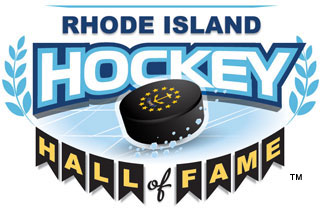What do the names Kleenex, Formica, Xerox, Scotch Tape, Coke and Zamboni all have in common? Well, they are “eponyms.”
Eponyms (we had to look that one up) are proprietary brand names that have become synonymous with product categories: Kleenex with soft facial tissue, Formica with counter tops, Xerox with photocopies, Scotch Tape with cellophane adhesive tape, Coke with a color carbonated soft drink…and yes, Zamboni with ice resurfacing.
It was in late October 1954 at the old RI Auditorium that a future eponym arrived. It was E-22, a new concept in restoring an ice sheet after considerable use. It was among the first ever in the northeast. It wasn’t yet called a Zamboni, but rather “an ice resurfacing machine.”
Louis A. R. Pieri, owner of the Auditorium and its principal tenant, the RI Reds of the American Hockey League, was among the first rink operators in the country to become intrigued by the idea of improving the resurfacing of an ice sheet between periods.
The standard method at the old ice barn had been a three step procedure: Three or four young skaters (mostly local high school players who were “rink rats”) would take heavy, giant scrapers (maybe 4 feet wide) and remove all the snow that had accumulated, then dump it through a drain in the boards behind the east goal and into a pit of steaming water to melt.
Norman Rosa, the building superintendent, would then hose down the ice surface evenly with hot water. In the final step the “rink rats” would return to smooth out the water using giant rubber squeegees (maybe 5 feet wide), thus making a new, clean skating surface for the players. The entire process took about 20 to 25 minutes.
Enter the saga of E-22.
Through 47- to 49-year old documents generously provided by the Zamboni Company of Paramount, here is how Lou Pieri landed E-22:
- October 14, 1952: In a letter to the company, Mr. Pieri requested a cost estimate to purchase an “ice scraper similar to the one you made for the Ice Capades.” The two parties must have talked further, but there is no documentation until 1954.
- March 8, 1954: Frank Zamboni wrote Mr. Pieri asking him if he was still interested in “our ice re-surfacing machine.” Cost would be $9,275 delivered to Providence, payment over three years.
- March 17, 1954: Mr. Pieri responded, “not interested at the present time.” Probably because the season was ending and he needed time to consider.
- April 12, 1954: Three weeks later Mr. Pieri reconsidered and wrote in essence a purchase order: “This is to confirm our understanding to purchase your Ice Making Machine for $7,950…with delivery before October 1st…we will begin to make ice about October 10th.” Mr. Pieri had negotiated a better price by $1,325.
- August 1954: A Rolodex-type card at the manufacturer indicates that Mr. Pieri’s E-22 was in production. But something must have delayed its October 1st delivery.
- October 18, 1954: Mr. Pieri wrote: “We have not as yet received the Ice-Resurfacing Machine, and would appreciate your advising just when we may expect it. This delay is costing us money, so please give this your immediate attention.”
- October 22, 1954 (8:39 AM): Mr. Pieri (who knew how to use leverage) sent a Western Union telegram: “Please advise immediately positive date of delivery of the ice making machine. If I can’t have immediate delivery I want to cancel as it is costing me money every day that we don’t have it. I might as well go back to my own way of making ice. Please wire me today.”
Within a few days Mr. Pieri got his “Ice Making Machine,” known today as the Zamboni. Along with it came a technician to assemble the machine and train an operator. This new vehicle reduced ice resurfacing to about 10 minutes as Norman Rosa proudly drove it, later with the Reds logo attached. And the manufacturer has gone on since to become the premier supplier for ice rinks throughout North America having sold over 9,000 Zamboni’s to date.
The model E was the fifth version after Frank Zamboni introduced his prototype Model A in 1949. Mr. Pieri’s E-22 (each machine was numbered sequentially as it was sold) joined a select group of E models. Boston Garden’s E-21, purchased just before the Auditorium’s, has long been retired and restored and is currently on display at the National Hockey League Hall of Fame.
Posted by RIHHOF


